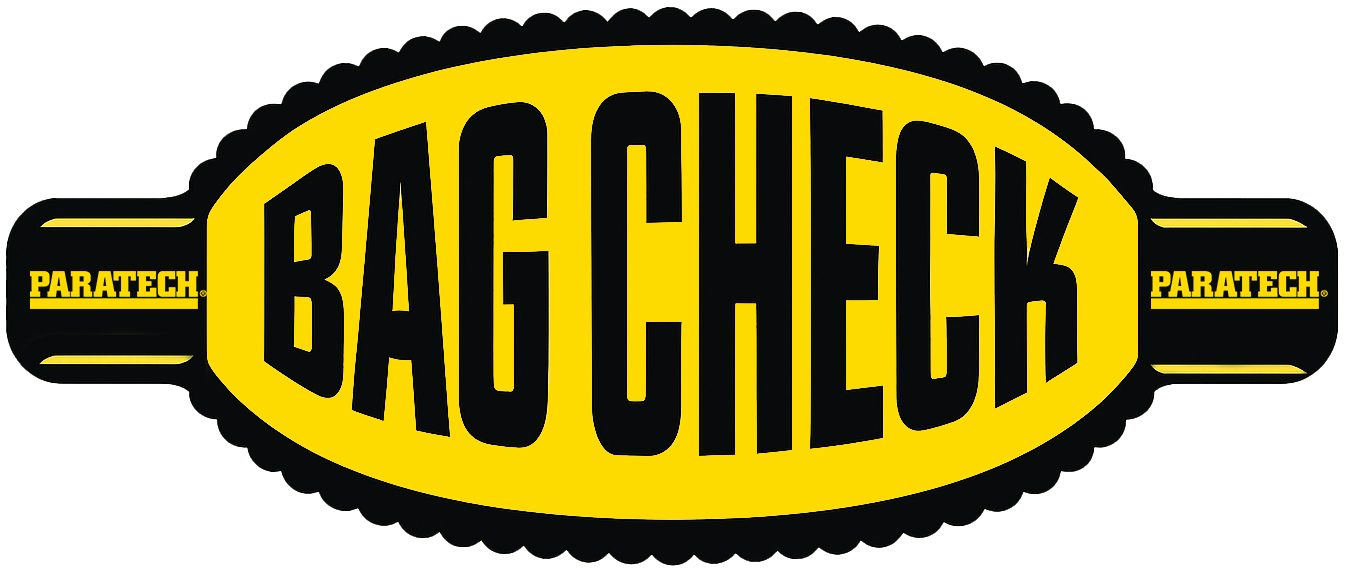
Are your air bags rescue ready?
Check any brand, model, and year
Paratech®
Why Check Your Air Bags?
Ensure Your Air Bags Are Not Expired or Expiring Soon — And Well Maintained
Safety
Well maintained and non-expired air bags are paramount to ensure your crew’s safety at an accident or deployment scene — and your victim(s)!
Liability
Don’t risk liability if your air bags fail because they are expired or poorly maintained.
Best Equipped
Replace you expiring, expired or decommissioned air bags with more powerful bags providing best-in-class lifting/shifting power, safety features and ease of use.
100% Confidence
Always know your air bag equipment is ready for service when you need it most. Stay on top of care, maintenance, storage and replacement timing.
Replace on Time
Always replace your bags when they are expired, the bag is leaking air, the bag malfunctions or there are major surface cuts or abrasions exposing reinforcement layers.
Did You Know?
Save your department/company from potential failure at the most critical time — ensure your bags are inspected regularly and replaced at or prior to their expiration date.
Quick Air Bag Maintenance Tips
These tips may also be helpful for other brand air bags — but always check your specific brand’s operating, training and maintenance documentation.
-
Don't drag or drop the nipple area
Do not drag or drop the bag on the nipple area, as this can cause breakage of the brass inflation fitting and render the bag useless.
-
Remove all dirt, sand, grit, etc. from quick connect couplings and nipples
Keep the exterior of all components clean of all dirt, grit, oil and grease accumulations. Except for the lift bag(s), wipe the exterior surfaces with a lint free cotton machinery wiping towel LIGHTLY dampened with soap and warm water solution. Be particularly careful to remove all dirt, sand, grit, etc. from quick connect couplings and nipples. Swirl in a bucket with the soap and water solution until clean. Rinse with a wiping towel LIGHTLY dampened with clean water. Then dry the surfaces thoroughly with a clean, dry wiping towel or low pressure compressed air. Also clean the lift bag with a soap and warm water solution, but scrub the lift bag with a stiff bristle broom or brush and rinse by spraying with cold water. If the cleaning solution or rinse water gets into the lift bag through the nipple, allow the lift bag to dry thoroughly before its next use.
-
Do not use any petroleum based product to clean components
Do not use any petroleum based product to clean components of the MAXIFORCE® Air Lifting Bag System. Petroleum based products could adversely react with the non-metallic parts of the system components and may result in a component failure when none should be expected or tolerated.
-
Thoroughly inspect and prepare bag for their next use before being place in storage
Thoroughly inspect and prepare bag for their next use before being placed in storage. While the lift bag is still wet with the cleaning solution, inflate to 30 psi and check for air bubbles denoting a leak(s). Except for air leakage from between the air inlet fitting and the male nipple, replace rather than attempt to repair a leaking lift bag. After a lift bag is clean and dry, all surfaces should be thoroughly inspected for cuts, abrasion, air bubbles and bulges (ply separation), and other similar damage. Inspect hose assemblies for cuts, cracks, crimps and brittleness. Inspect the hose quick connect coupling and nipple for secureness of attachment and burrs, nicks, corrosion and other similar damage that would prevent a leak proof interconnection.
-
Keep the exterior of all components clean of all dirt, grit, oil and grease accumulations
Remove all dirt, sand, grit, etc. from quick connect couplings and nipples. Regardless of whether the lift bag(s) are to be stored flat or upright, the inlet nipple shall be covered with the tethered protective cap over the inlet nipple.
-
Protect from any extreme environmental conditions where blowing dust, sand, grit and other similar materials could cause damage
Air bag components must be protected from any extreme environmental conditions where blowing dust, sand, grit and other similar materials could cause damage. If these environmental conditions are likely to be encountered, plastic wrap all components for protection.
Trade-In Special Offer
You wouldn’t drive an emergency apparatus on 15 year old tires…. why would you take the chance on outdated air bags? Ditch your old, beat up air bags for the SUPERIOR LIFT and SHIFT capabilities of the MAXIFORCE® G2 bags! Trade in any qualifying bags to receive 20% off the purchase of new MAXIFORCE® G2 bags, competitor bags welcome!